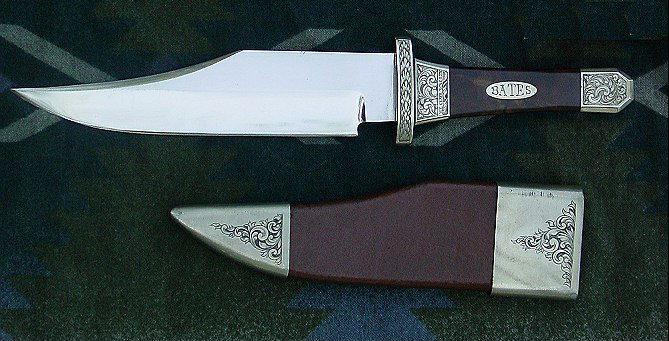Clip point on:
[Wikipedia]
[Google]
[Amazon]
 The clip point is one of the three most common shapes for the
The clip point is one of the three most common shapes for the
 The clip point is one of the three most common shapes for the
The clip point is one of the three most common shapes for the blade
A blade is the Sharpness (cutting), sharp, cutting portion of a tool, weapon, or machine, specifically designed to puncture, chop, slice, or scrape surfaces or materials. Blades are typically made from materials that are harder than those they a ...
of a knife
A knife (: knives; from Old Norse 'knife, dirk') is a tool or weapon with a cutting edge or blade, usually attached to a handle or hilt. One of the earliest tools used by humanity, knives appeared at least Stone Age, 2.5 million years ago, as e ...
(the others being the drop point
Drop point is a style of knife blade that slopes on the spine of the blade from the handle of the knife to the tip of the blade. This allows the spine of the blade (where the blade is thicker, and thus stronger) to continue forward to the tip of ...
and the spear point). Clip point blades have the appearance of having the forward third of the blade "clipped" off. The clip itself can be straight or concave.
Description
Traditionally, the spine or unsharpened edge of the knife begins at the hilt and continues to a point between one third to one fourth of the blade length. The blade spine then tapers in thickness in either a straight line or a recurve to the knife's point, which may be located above, below, or in line with the central axis of the blade. The thinned false edge of the clip may be sharpened to form a true second cutting edge. If the false edge is sharpened it increases the knife's effectiveness in piercing.History
The clip point blade design dates back to at least Macedonian times, where examples of knapped flint clip point knives from the Eneolytic period have been unearthed at the estuary of Drim. Variants include the California clip, which uses a clip greatly extended in length, and the Turkish clip point with its extreme recurve. One of the most recognizable clip-point blades is used on the famousBowie knife
A Bowie knife ( ) is a pattern of fixed-blade fighting knives created by Rezin Bowie in the early 19th century for his brother James Bowie, who had become famous for his use of a large knife at a duel known as the Sandbar Fight.
Since its fir ...
.
Characteristics
The clip point style allows a quicker, and thus deeper, puncture upon insertion (clip point knives being thinner at the spine). Thedrop point
Drop point is a style of knife blade that slopes on the spine of the blade from the handle of the knife to the tip of the blade. This allows the spine of the blade (where the blade is thicker, and thus stronger) to continue forward to the tip of ...
has a slightly slower insertion due to its thicker spine near the tip. The drop point knife allows for more control when cutting, has a slower withdrawal time, and better negotiates "drawn out" (carving like) operations. The clip point lends itself to a quicker "stabbing" advantage with less drag during insertion and faster withdrawal. Compared to the drop point design, the clip point has a narrower and weaker tip. The clip point is also weaker than the spear point, and for this reason the latter is favored for most thrusting knives, such as the dagger
A dagger is a fighting knife with a very sharp point and usually one or two sharp edges, typically designed or capable of being used as a cutting or stabbing, thrusting weapon.State v. Martin, 633 S.W.2d 80 (Mo. 1982): This is the dictionary or ...
.
References
Knives {{Knife-stub